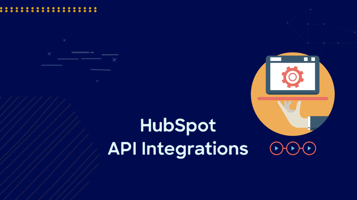Table of contents
You've probably heard a lot about RevOps recently. You may be wondering if it's just the latest business buzzword or something that makes a real difference. The fact is, that revenue operations, more commonly called RevOps, play an important role in the financial health of an organization. It's a term that's not always well understood. Let's take a look at what RevOps really means and look at a few RevOps strategies.
What is RevOps?
A simple definition of RevOps is a function that aligns all revenue-enhancing operations such as sales, marketing, revenue intelligence, and customer success operations under a unified team and strategy. The idea is to get past a siloed approach where these operations are handled separately.
 Image Source: LeanData
Image Source: LeanData
Although RevOps is fairly new, especially for financial services, it's quickly making an impressive impact on many businesses. The LeanData State of Revenue Operations reports a 55% increase in revenue operations adoption from 2018 to 2019. Here are some key objectives and responsibilities that RevOps covers.
- Takes a comprehensive view of revenue-related operations in an organization. Works with departments such as Sales, Marketing, and Customer Success. It's not meant to replace these teams, but to align their processes and ensure they are all working towards the same goals.
- Uses a data-driven approach to better realize goals such as maximizing revenue, reducing operating expenses, finding ideal price points, understanding the customer lifecycle, and identifying tools and practices that need updating.
- Focuses on results-driven KPIs such as cost of customer acquisition (CAC), customer churn, customer retention, and sales forecasting to develop more effective revenue-generating strategies.
RevOps vs Silos
If you want your company to reach its potential, nothing is more important than teamwork. Silos can undermine seamless teamwork if every department isn't on the same page. RevOps is a departure from the traditional siloed approach to marketing, sales, and customer service. There are several reasons to be concerned about silos in your organization.
Improve Communication and Collaboration
Every company aims to maximize revenue. However, when you have several departments working separately, teams may be working at cross purposes. As Neil Patel explains, marketing silos can have several detrimental effects:
- Time is wasted when teams perform redundant tasks
- Teams may be competitive rather than working together
- In larger organizations, teams may seldom communicate at all
With a RevOps approach, you never lose sight of the big picture. The purpose of RevOps isn't to replace or interfere with other teams but to make sure they're working towards common goals. This approach facilitates communication between teams, breaks down silos, and helps drive revenue growth. It also ensures that each department has the latest data and insights needed to create the optimal strategies.
Boost Revenue Intelligence
Technology is rapidly advancing. Everyone sees this, but it's not always clear how to take advantage of it. One key is to spend less time on data collection and analysis. Automation is a key aspect of RevOps strategy and revenue intelligence.
HubSpot reports that salespeople only spend about a third of the day talking to prospects. 17% of their time is consumed with entering data. One of the key objectives of RevOps is to boost revenue intelligence throughout an organization by collecting, analyzing, and syncing data across all departments and teams.
Who Needs RevOps Strategy the Most?
Revenue Operations is especially helpful for companies in the financial services sector. There are several reasons for this.
- Increased competition from new fintech startups. In a competitive environment, it's crucial to adopt the most effective revenue-enhancing strategies
- Customer expectations. When your clients are trusting you to guide them on important financial decisions, they have demanding standards for your performance
- In financial services, gathering and interpreting vital data in real time is essential for every aspect of your business. The RevOps model helps you do this with the greatest efficiency
How to Transition to a RevOps Model
It's great to understand how powerful a RevOps strategy can be for a company. But how do you actually get started? Here are some key steps to implement revenue operations in your organization.
Get Buy-in From All Departments
You don't want teams to feel they're being steamrolled by RevOps. Educate them on the benefits and reassure everyone that the results will be beneficial to everyone. Emphasize the advantages such as better access to data, less paperwork, and more sales. Keep in mind that education and winning people over is a long and ongoing process. Not everyone will necessarily get on board right away. Over time, however, as RevOps strategies prove themselves effective, people will embrace them.
Create a Clear Strategy
In order to reap the advantages of RevOps and to get the essential buy-in from all teams, you need a nuts and bolts strategy, which includes:
- Assign roles. Identify a leader or team that will be effective at bringing all revenue-enhancing functions together
- Have a timeline in place for implementing RevOps
- Identify specific problems or blockages in your sales cycles
- Make sure you thoroughly understand your customer journey
- Use a CRM platform with features like the HubSpot Operations Hub that allows you to automate and sync data
- Use KPIs that are directly relevant to revenue
Now is the Ideal Time for Revenue Operations
If you're like many companies we work with, you're already using powerful tools and systems for automation. However, you need more than great tools to see results. You need an overriding strategy to improve efficiency and communications and maximize revenue. More and more companies are finding that a RevOps strategy is the best way to move forward.
Getting started with RevOps can be a daunting transition. If you want the process to succeed, you have to make sure you've taken all the necessary steps. If you're looking for a useful resource to help you, take a look at the RevOps Checklist.
If your financial services business is ready to use the power of RevOps to grow, reach out to Learners.ai today. We can help you with a RevOps Audit and Go-To-Market Strategy that is unique to your business and level of RevOps maturity. Contact us today to learn more about how we can help you achieve your revenue goals.



